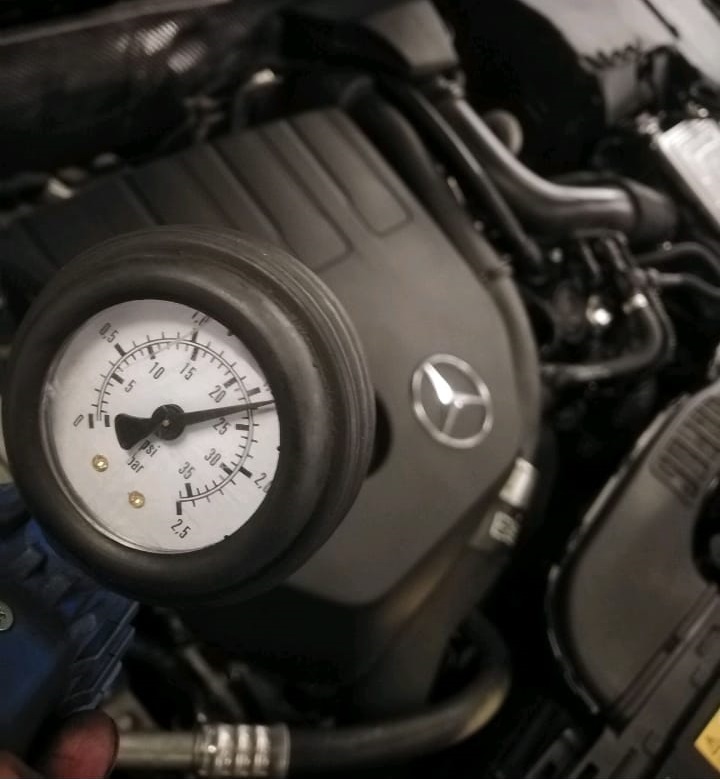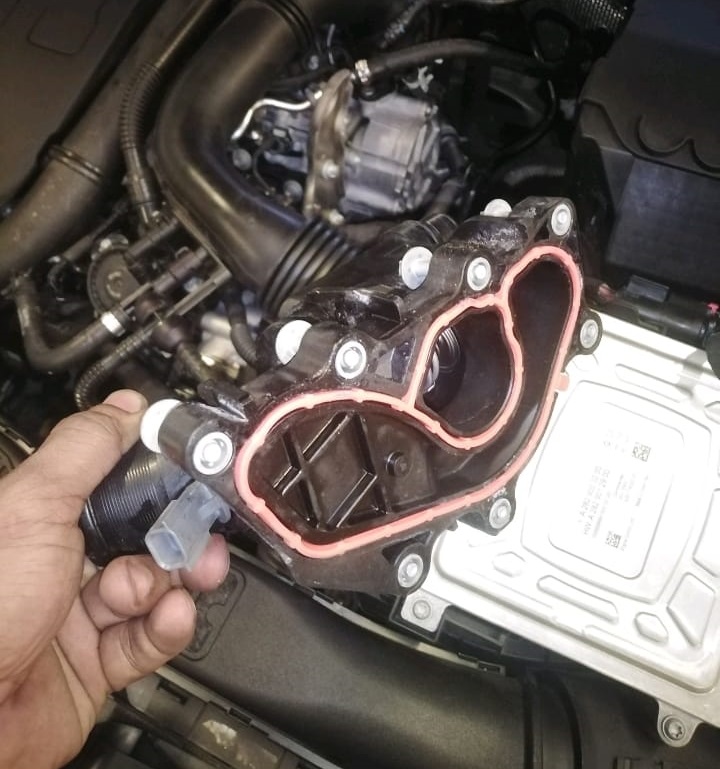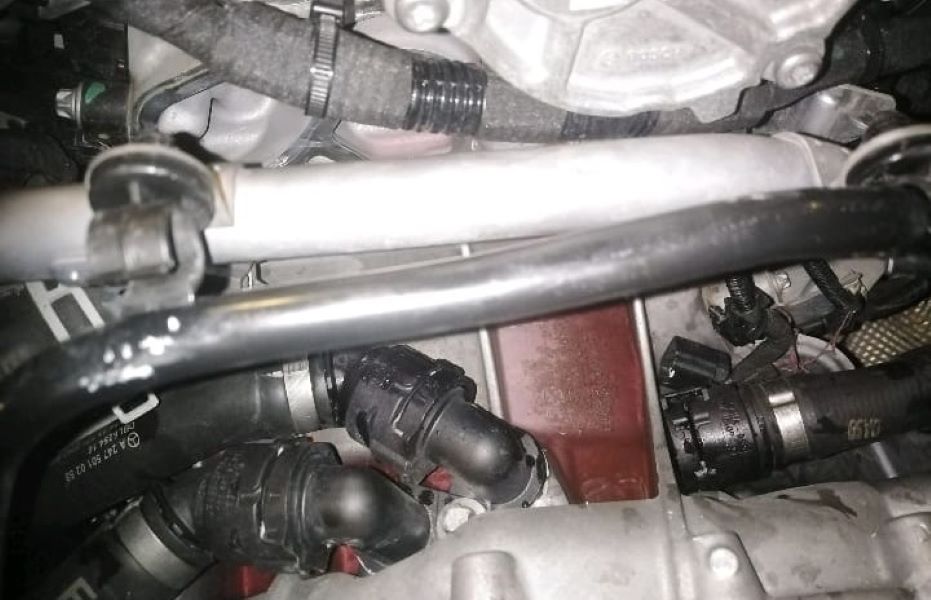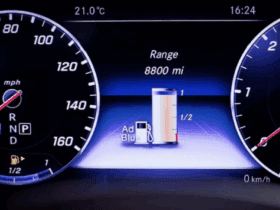Table of Contents
Mercedes Check Coolant Level: A Case Study on the Mercedes CLA W118 with M282 Engine
Maintaining the cooling system of your Mercedes-Benz is not just a matter of routine service it’s one of the most critical factors in keeping your engine healthy.
When the Mercedes Check Coolant Level warning appears on the dashboard, it’s an immediate red flag that should never be ignored. Left unattended, a coolant leak or low coolant level can lead to overheating, loss of performance, and even catastrophic engine damage.
In this detailed case study, we’ll explore a real-world repair scenario involving a Mercedes CLA W118 equipped with the M282 engine. The owner experienced recurring coolant loss and dashboard warnings despite topping up the coolant several times.
We’ll walk through the complaint, the diagnostic process, the root cause, the repair procedure, and the key lessons every Mercedes owner should take away.
Mercedes Check Coolant Level – Symptom, Cause & Fix Table
| Symptom | Possible Cause | Recommended Fix |
|---|---|---|
| Mercedes Check Coolant Level warning appears on dashboard | Low coolant level due to leak | Inspect system, pressure test to confirm source |
| Coolant loss despite topping up | Thermostat housing crack or seal failure | Replace thermostat housing with OEM part |
| Engine running hotter than normal | Insufficient coolant circulation | Refill and bleed system to remove air pockets |
| Repeated warning light after coolant refill | Air trapped in cooling system | Perform proper bleeding procedure |
| Coolant puddle under vehicle | Radiator, hose, or water pump leak | Inspect components, replace faulty part |
| White or dried residue around engine bay | Slow coolant seepage at joints | Check seals and clamps, tighten or replace as needed |
Vehicle and Complaint
- Model: Mercedes-Benz CLA W118
- Engine: M282
- Customer Complaint: Coolant leak, repeated “Mercedes Check Coolant Level” warning
The owner reported that over several weeks, the Check Coolant Level warning light appeared repeatedly. Even after refilling the coolant reservoir, the warning would return within a short time. Naturally, this raised concerns about hidden leaks or more serious cooling system issues.
The M282 is a modern turbocharged four-cylinder engine used across several Mercedes models. While it delivers excellent performance and efficiency, it depends heavily on a sealed and efficient cooling system to regulate heat. Any leak, no matter how small, puts the entire system at risk.
Step 1: Cooling System Inspection
The first step was a visual inspection of the cooling system components:
- – Coolant reservoir and cap
- – Radiator and connections
- – Coolant hoses
- – Visible seals around the water pump and thermostat housing
At first glance, there were no obvious signs of coolant escaping no puddles under the car, no white residue, and no damp hoses. This often happens with slow or hidden leaks that only reveal themselves under pressure.

Step 2: Pressure Testing
To confirm the customer’s complaint, the technician performed a coolant pressure test. This involves pressurizing the cooling system with a special tool to simulate engine operating conditions.
- – Within minutes, the pressure began to drop, confirming a leak was present.
- – Careful inspection revealed the coolant was seeping from the thermostat housing a component not always obvious during a visual check.
This was a key discovery: the thermostat housing had developed a leak, allowing coolant to escape slowly, enough to trigger the Check Coolant Level warning but not enough to cause an immediate catastrophic failure.

Why the Thermostat Housing Matters
The thermostat housing is more than just a casing it plays a vital role in regulating coolant flow and maintaining the engine’s operating temperature. If it cracks, warps, or its seals fail, coolant leaks out. Over time, this:
- – Reduces coolant levels
- – Causes overheating
- – Can warp the cylinder head or damage the head gasket
This is why even a small leak in this area must be taken seriously.

Step 3: Thermostat Housing Replacement
Once the source was identified, the repair process began.

Repair procedure:
- 1. Drain the coolant from the system.
- 2. Remove the old thermostat housing and inspect for cracks or seal failures.
- 3. Clean the surrounding surfaces to ensure proper sealing.
- 4. Install a new genuine Mercedes thermostat housing.
- 5. Reconnect all hoses and fittings with factory torque specifications.
The technician emphasized the importance of using OEM parts. Aftermarket thermostat housings may not fit as precisely, increasing the risk of future leaks.

Step 4: Refilling and Bleeding the Cooling System
With the new housing in place, the cooling system needed to be:
- – Refilled with Mercedes-approved coolant (using the correct coolant type and ratio)
- – Bled properly to remove air pockets, which can cause overheating or erratic temperature readings
This step is critical because trapped air can mimic coolant loss and continue to trigger the Mercedes Check Coolant Level warning.
Step 5: Testing and Verification
After reassembly, the technician started the engine and closely monitored:
- – Coolant level stability
- – Temperature readings
- – Dashboard warnings
Finally, a test drive confirmed that the cooling system was functioning correctly. The Check Coolant Level light no longer appeared, and no further coolant loss was detected.
The vehicle was then started, and the technician closely monitored the engine temperature and the Mercedes Check Coolant Level indicator. After a thorough test drive, it was confirmed that the coolant leak had been successfully resolved, and the warning light no longer appeared on the dashboard.
Key Takeaways for Mercedes Owners
This case study highlights several important lessons for Mercedes-Benz drivers:
- 1. Don’t ignore the warning light The Check Coolant Level indicator isn’t just a reminder; it’s a safety mechanism. Driving with low coolant can cause irreversible engine damage.
- 2. Coolant leaks can be hidden Even if you don’t see a puddle, a slow leak can still exist inside the thermostat housing, water pump, or radiator connections.
- 3. Pressure testing is essential Visual inspection alone is often insufficient. A pressure test is the only way to pinpoint small leaks.
- 4. Use OEM replacement parts Genuine thermostat housings and seals are designed to withstand the pressure and heat cycles of the M282 engine.
- 5. Proper bleeding prevents future issues Failing to bleed the system correctly can cause overheating, trapped air, and false warnings.
Why Cooling System Maintenance Is Critical
The cooling system is one of the most underrated but vital systems in your Mercedes. It:
- – Regulates engine temperature
- – Prevents overheating
- – Protects against corrosion
- – Maintains fuel efficiency
Ignoring issues like coolant leaks can lead to:
- – Warped cylinder heads
- – Blown head gaskets
- – Complete engine failure
A repair as simple as replacing a thermostat housing is far less expensive than rebuilding or replacing an overheated engine.
Conclusion
The Mercedes Check Coolant Level warning should never be dismissed as a minor issue. In the case of the Mercedes CLA W118 with the M282 engine, it pointed to a thermostat housing leak that, if ignored, could have caused severe engine damage.
By performing a systematic diagnosis visual inspection, pressure testing, part replacement, and thorough system bleeding the problem was fully resolved.
For Mercedes owners, the lesson is clear:
- – Take dashboard warnings seriously
- – Schedule inspections promptly
- – Rely on professionals for accurate diagnosis and repair
Addressing coolant leaks early not only saves money but also ensures your Mercedes-Benz continues to deliver the performance, safety, and reliability it was built for.
More Mercedes Cooling System Resources
Want to explore more causes, symptoms, and repair tips for coolant leaks, overheating, and contamination?
Learn more about Mercedes cooling system faults in our full Cooling System Guide.
Frequently Asked Questions – Mercedes Check Coolant Level
Q1. What does the “Mercedes Check Coolant Level” warning mean?
The warning indicates that the coolant level in your Mercedes is below the recommended range. This may be caused by leaks, evaporation, or trapped air in the system.
Q2. Can I drive with the Mercedes Check Coolant Level warning on?
It is not recommended. Driving with low coolant can lead to overheating and severe engine damage. Stop the vehicle safely, check coolant levels, and seek professional help if the warning persists.
Q3. How do I reset the coolant level warning in a Mercedes CLA W118?
The warning usually resets automatically once the coolant system is refilled, bled, and operating correctly. If it remains, the issue may be with the coolant sensor or a persistent leak.
Q4. What are common causes of coolant leaks in the Mercedes CLA W118 M282 engine?
Frequent causes include a faulty thermostat housing, cracked hoses, radiator leaks, or water pump failure.
Q5. How much coolant does the Mercedes CLA W118 M282 engine need?
The M282 engine typically requires around 6–7 liters of coolant, but always check the official Mercedes-Benz service manual for exact specifications.
Q6. Do I need to bleed the cooling system after topping up coolant?
Yes. Bleeding removes trapped air (airlocks) that can prevent circulation and cause overheating.
Q7. How can I prevent future coolant leaks in my Mercedes?
Regular maintenance, using OEM coolant, checking hoses and seals, and replacing worn components promptly can help prevent future issues.
Author
Written by: Mercedes Expert
Automotive Technical Trainer & Mercedes-Benz Diagnostic Specialist
With years of hands-on experience repairing and diagnosing Mercedes-Benz vehicles, specializes in case-study-based troubleshooting guides that blend workshop accuracy with educational clarity.
Last Updated: August 2025






Leave a Reply